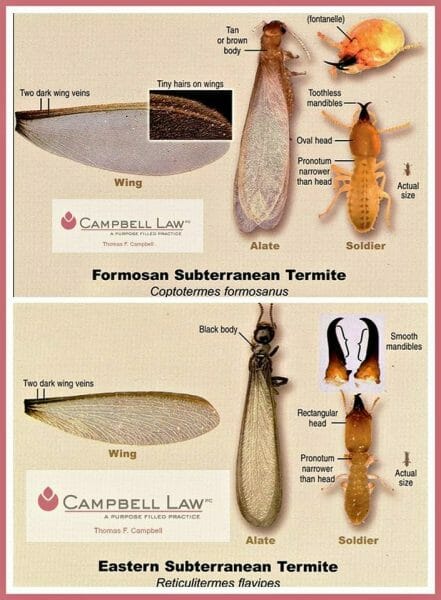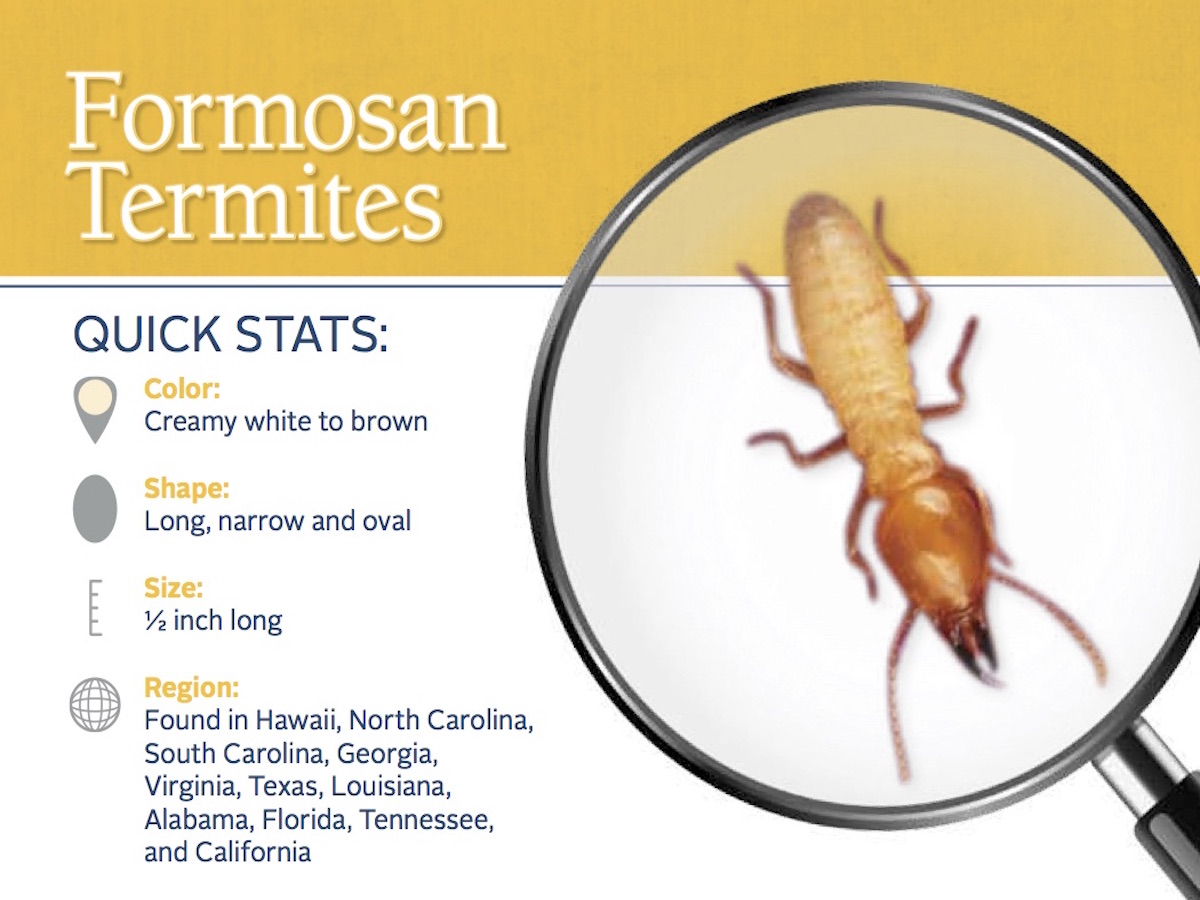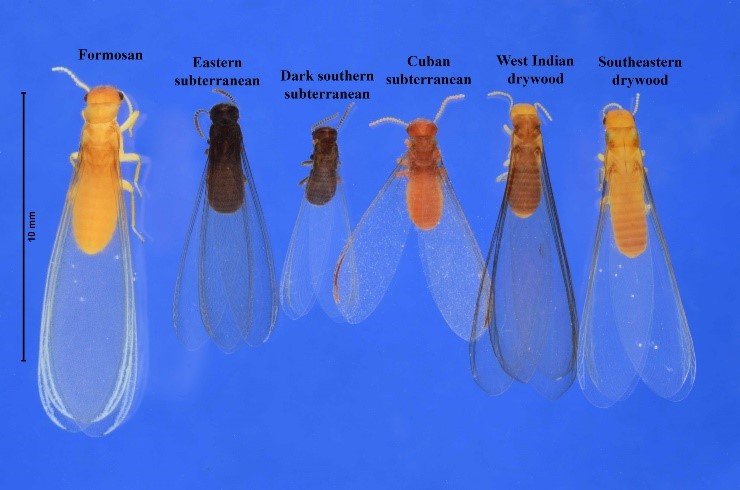Discovering termites in your home can feel like a sudden, unwelcome surprise, a bit like finding an unexpected guest who never plans to leave. These tiny invaders cause billions of dollars in damage each year, so understanding them is a big deal for anyone with a home. Knowing the difference between the common eastern subterranean termites and the more aggressive Formosan termites is, frankly, pretty important for protecting your property. It helps you figure out what you're up against, and that's a key first step.
You see, while both types of termites are sneaky wood-eaters, they have some distinct habits and characteristics. Thinking about this is kind of like how Eastern Connecticut State University helps students gain knowledge and skills to lead; knowing these differences gives you the power to act. Ignoring the signs, or not knowing which kind of termite you're dealing with, could lead to much bigger problems down the road, and nobody wants that, do they?
This article will help you tell these two significant wood-destroying pests apart. We'll look at how they appear, how they behave, and what kind of damage they do. It's a bit like learning to identify different rock formations, a skill a geology professor, like Dickson Cunningham, might teach. Knowing these specific details can make all the difference in protecting your biggest investment, your home, from these persistent little creatures.
Table of Contents
- Introduction to Termite Types
- Physical Differences: What They Look Like
- Colony Size and Behavior: How They Operate
- Damage Patterns and Speed: What They Do to Your Home
- Geographic Reach: Where You Might Find Them
- Signs of Infestation: What to Look For
- Treatment and Prevention: How to Protect Your Home
- Frequently Asked Questions
Introduction to Termite Types
Termites are social insects, meaning they live in big groups, much like a thriving community. They are, you know, quite essential decomposers in nature, breaking down dead wood and plant matter. When they decide to make your home their dining spot, however, they become a serious problem. There are different kinds of termites, and knowing the main ones that cause trouble in North America is very helpful. We're talking about eastern subterranean termites and Formosan termites here, two of the most common and destructive types homeowners face. So, it's almost like they have their own distinct personalities, if you will.
Physical Differences: What They Look Like
Spotting the actual termites can be tricky since they usually stay hidden. However, if you do see them, there are some ways to tell them apart. It's not always easy, but knowing what to look for can really help. Think of it as a small detective job, where the clues are in their appearance. That, is that, a pretty useful skill to have.
Eastern Subterranean Termite Appearance
Eastern subterranean termites are the most widespread termite species in North America. Their workers, which are the ones you're most likely to see, are quite small, perhaps a bit creamy white in color, and have soft bodies. They don't have eyes and they avoid light. The soldiers, who protect the colony, have rectangular, yellowish-brown heads with large, powerful jaws. Their swarmers, which are the winged reproductive termites, are dark brown or black and measure about a third of an inch long. They have two pairs of wings that are roughly equal in length and often appear translucent. You might see these swarmers in the spring, especially after a rain. They're, you know, a very common sight.
Formosan Termite Appearance
Formosan termites are sometimes called "super termites" because of their destructive power. Their workers look quite similar to eastern subterranean workers, so it's hard to tell them apart just by looking at the workers. However, the soldiers are distinct. Formosan termite soldiers have oval-shaped, yellowish-brown heads, which is different from the rectangular heads of subterranean soldiers. They also have a unique feature: they secrete a white, sticky fluid from a gland on their heads when disturbed. This fluid can be seen as a defensive mechanism. Formosan swarmers are yellowish-brown and larger than eastern subterranean swarmers, usually about half an inch long. Their wings are also a bit hairy. They tend to swarm later in the spring or early summer, often at dusk. They are, actually, a truly formidable foe.
Colony Size and Behavior: How They Operate
The way these termites build their homes and go about their daily lives tells you a lot about them. It's not just about what they look like, but also how they function as a group. Understanding their habits can give you a better idea of the threat they pose. So, you know, pay attention to their lifestyle.
Eastern Subterranean Colony Habits
Eastern subterranean termites live in colonies that can number in the hundreds of thousands, sometimes even a million individuals. They need contact with soil to survive because they get moisture from it. They build mud tubes, which are like little tunnels, to travel between their underground nests and their food sources, like the wood in your home. These tubes protect them from predators and dry air. They are, you know, pretty good at staying hidden. Their foraging range from the main nest is usually limited to about 100 feet. They are, for instance, very dependent on moisture.
Formosan Colony Habits
Formosan termite colonies are much, much larger than eastern subterranean colonies. They can contain several million individuals, making them incredibly powerful. What makes them particularly concerning is their ability to create "carton nests" above ground. These nests are made from chewed wood mixed with soil and saliva, and they can hold moisture, allowing the termites to live without direct contact with the ground. This means they can infest upper floors of buildings or even boats. Their foraging range can extend up to 300 feet from the main nest. They are, honestly, a lot more independent from the soil than their cousins. This ability to build aerial nests makes them, frankly, a much more difficult pest to control once established.
Damage Patterns and Speed: What They Do to Your Home
Both types of termites eat wood, but the speed and extent of the damage they cause can be quite different. Knowing what kind of destruction to expect can help you gauge the urgency of the situation. It's, you know, a very important part of the puzzle.
Eastern Subterranean Damage
Eastern subterranean termites eat wood along the grain, creating galleries that are often packed with soil or mud. The damage they cause can be extensive over time, but it usually progresses at a somewhat slower pace compared to Formosan termites. They prefer softer wood, but will chew through harder wood if necessary. You might find hollowed-out wood, or wood that sounds dull when tapped. They leave behind a distinct pattern of damage, almost like a maze, filled with dirt. This kind of damage can be quite significant over several years if not addressed. They are, in a way, persistent but not always fast.
Formosan Termite Damage
Formosan termites are known for their incredibly fast and destructive feeding habits. Their large colony size means they can consume wood at an alarming rate. They can hollow out timbers completely, leaving only a thin veneer of wood or paint on the outside. Their carton nests, found within walls or attics, are a clear sign of their presence and can cause structural damage just by their sheer size and moisture content. The damage they inflict is often more widespread and severe in a shorter amount of time than what eastern subterranean termites manage. They are, simply put, capable of causing truly catastrophic damage quite quickly. This is, you know, why they are so feared.
Geographic Reach: Where You Might Find Them
The part of the country you live in can give you a clue about which termite species might be a concern. Termites thrive in specific climates, and knowing their preferred zones helps with prevention. So, it's pretty helpful to know where they typically hang out.
Eastern Subterranean Habitat
Eastern subterranean termites are found throughout most of the United States, especially in the eastern half, from Canada down to Florida, and west into the Great Plains. They prefer warmer climates but can survive in colder areas by staying deep in the soil below the frost line. They are, basically, very adaptable to different environments. This makes them a common concern for homeowners in a very wide range of places. You'll find them, for instance, in nearly every state east of the Rockies.
Formosan Termite Habitat
Formosan termites are more restricted to warmer, humid regions. They are primarily found in the southeastern United States, including states like Florida, Louisiana, Texas, South Carolina, and Hawaii. Their presence is also noted in parts of California. They are, you know, a bit more particular about their living conditions. Their spread has often been linked to human activity, like the movement of infested materials or ships. They are, in fact, an invasive species that has established itself in these warmer areas. This means they are a serious threat in those specific regions, perhaps more so than in cooler climates.
Signs of Infestation: What to Look For
No matter which type of termite you might have, there are some common signs that point to their presence. Being observant can help you catch an infestation early, which is, honestly, a huge advantage. Just like you'd notice details when studying something new, looking for these signs around your home is key.
- Mud Tubes: These pencil-sized tunnels on walls, foundations, or wooden beams are a classic sign of subterranean termites. They use these to travel safely.
- Damaged Wood: Wood that sounds hollow when tapped, or has visible galleries inside. You might see tiny holes or channels.
- Swarmers or Discarded Wings: Finding winged termites (swarmers) inside your home, especially near windows or light sources, means a colony is trying to expand. Piles of discarded wings, which they shed after swarming, are also a strong indicator.
- Frass (Termite Droppings): While subterranean termites usually don't leave visible droppings outside their tunnels, drywood termites do. However, with Formosan termites, their carton nests can sometimes be mistaken for something else, but they are a distinct sign.
- Blistering Paint or Uneven Surfaces: Termites eating wood just beneath the surface can cause paint to bubble or wood to appear warped.
Keeping an eye out for these things is, you know, a really good habit. If you see any of these signs, it's time to act.
Treatment and Prevention: How to Protect Your Home
Dealing with termites requires professional help, especially with Formosan termites due to their size and aggressive nature. Trying to handle a termite problem yourself can often lead to bigger issues down the line. It's, you know, often best left to the experts. However, there are things you can do to make your home less inviting to these pests.
- Reduce Moisture: Fix leaky pipes, improve drainage around your foundation, and make sure gutters are clear. Termites love damp conditions.
- Remove Wood-to-Soil Contact: Keep wood siding, door frames, and window frames from touching the soil directly. Create a gap between the soil and any wood structures.
- Clear Debris: Remove old wood, stumps, and excess mulch from around your home's foundation. These are potential food sources.
- Regular Inspections: Consider having a professional termite inspection done regularly, perhaps once a year. This is especially true in areas where Formosan termites are common.
- Professional Treatment: If you suspect or confirm an infestation, contact a qualified pest control professional. They can identify the species and apply the correct treatments, which might include liquid termiticides, bait systems, or fumigation for severe Formosan infestations.
Protecting your home from these tiny destroyers is a continuous effort. Just as Eastern Connecticut State University’s Center for Community Engagement (CCE) recently showcased its leadership initiatives on a national stage, taking a leading role in protecting your home from termites shows great initiative. Learn more about termite prevention on our site, and link to this page for more detailed identification tips. For more information on general pest control practices, you might also look at a reputable pest control resource, which can offer broad guidance. It's, you know, about being prepared.
Frequently Asked Questions
What is the most destructive termite?
The Formosan termite is, you know, generally considered the most destructive termite species in the United States. Their very large colony sizes and ability to create aerial nests mean they can cause extensive structural damage at a really fast pace.
What is the difference between subterranean and drywood termites?
Subterranean termites, like the eastern and Formosan types, live in the soil and need contact with moisture to survive. They build mud tubes to get to food. Drywood termites, on the other hand, live entirely within the wood they infest and do not need soil contact. They create very distinct fecal pellets, called frass, which they push out of tiny holes. So, it's almost like they have completely different lifestyles.
How do I know if I have termites or ants?
It can be a bit tricky to tell them apart, but there are key differences. Termite swarmers have straight antennae, a broad waist, and two pairs of wings that are equal in length. Ant swarmers have elbowed antennae, a pinched waist, and their front wings are longer than their back wings. Also, termites shed their wings quite easily, which you might find in piles. Ants, you know, typically don't.



Detail Author:
- Name : Hipolito Strosin Jr.
- Username : zwisozk
- Email : saul62@hudson.biz
- Birthdate : 1980-03-22
- Address : 5977 Bashirian Trail Suite 232 Rylanfort, CA 53168-4829
- Phone : +1-240-992-1339
- Company : Denesik, O'Conner and Wilkinson
- Job : CEO
- Bio : Deserunt magnam maiores explicabo nam eveniet autem dolor. Similique officiis debitis dolorem dicta. Voluptate omnis alias quo velit.
Socials
tiktok:
- url : https://tiktok.com/@elmofisher
- username : elmofisher
- bio : Maiores in non id ea id non. Cum odio placeat suscipit rerum.
- followers : 6868
- following : 2205
twitter:
- url : https://twitter.com/elmo_fisher
- username : elmo_fisher
- bio : Rerum dolorum cumque necessitatibus aut consequuntur non. Odit ut vero minus quia veniam. Vero et labore rerum eligendi et est sint ut.
- followers : 3151
- following : 2844